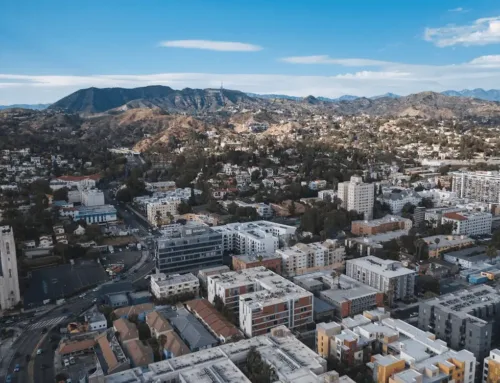Everything About Zoning Variance and Change
Navigating the complex landscape of zoning laws and ordinances can be a daunting task, especially for those immersed in the dynamic world of real estate. Zoning regulations play a critical role in maintaining uniformity and consistency among properties, ensuring that they align with the community’s vision and standards. However, these regulations can sometimes limit a property’s potential, leaving owners searching for solutions.
That’s where zoning changes and variances come in — they give landowners a possibility to be granted an exception to the area’s zoning ordinances.
Do you know how your property is zoned? Millman National Land Services can help you find out!
What Is a Zoning Variance?
A zoning variance is a specialized tool that provides property owners with the opportunity to seek relief from specific zoning requirements. It acts as a potential gateway for owners to utilize their land in ways that may not be permissible under the current zoning regulations.
Zoning variances are not granted lightly, as they require a thorough examination of the property in question, as well as consideration of any potential impacts on the surrounding community. The applicant must demonstrate a unique hardship or practical difficulty that justifies the need for a variance. This process ensures that the integrity of the community’s zoning plan is upheld, while also providing flexibility for property owners.
Related: What Is the Purpose of Zoning?
Exploring the Different Types of Zoning Variances
Zoning variances play a pivotal role in real estate development and land use, providing property owners with the flexibility needed to optimize their assets. Broadly categorized into use and area variances, these legal instruments cater to specific needs and circumstances. Let’s delve deeper into the nuances and distinctions between these two types of zoning variances, shedding light on their applications and the stringent criteria associated with them.
Use Variances
A use variance stands as a crucial tool for property owners, granting them the leeway to utilize their land in ways that might deviate from existing zoning restrictions. This type of variance finds its relevance in a variety of contexts, including but not limited to:
- Facilitating commercial ventures within residentially zoned districts.
- Introducing industrial operations in areas typically reserved for commercial activities.
- Allowing for the construction of multiple dwelling units in zones predominantly designated for single-family residences.
The journey to securing a use variance is marked by stringent scrutiny, as it necessitates a departure from the established character of the neighborhood. Property owners bear the onus of demonstrating tangible hardship stemming from the current zoning regulations, illustrating how these constraints impede the realization of a reasonable return on their investment.
Criteria for Obtaining a Zoning Variance
The path to obtaining a zoning variance is paved with a set of rigorous conditions, each serving as a cornerstone in the evaluation process. Applicants must:
- Clearly articulate how existing zoning ordinances thwart their ability to achieve a reasonable return on their property.
- Provide compelling evidence that the requested variance will have its impacts confined solely to the property in question, ensuring minimal disruption to adjacent buildings and the broader community.
- Reaffirm that the proposed change will not precipitate a significant alteration in the district’s character.
- Validate that the hardship prompting the variance request is not self-inflicted, but rather a consequence of the zoning regulations themselves.
Unpacking Area Variances
Area variances stand out as a vital resource for property owners, offering a means to creatively navigate and maximize land use within the stringent boundaries set by zoning regulations. Unlike use variances, area variances primarily address the physical constraints and dimensional requirements stipulated by zoning laws. Let’s explore the scenarios in which area variances become essential and the criteria that govern their approval.
Scenarios Necessitating Area Variances
Area variances are indispensable when property owners aspire to make physical alterations or additions that fall outside the prescribed zoning dimensions. Common applications include:
- Executing home extensions to accommodate growing space needs.
- Erecting fences along property boundaries for enhanced privacy or security.
- Establishing off-street parking facilities directly connected to the property, ensuring convenience and accessibility.
Navigating the Approval Process for Area Variances
Securing an area variance is generally perceived as less daunting than obtaining a use variance, given its focus on physical modifications rather than fundamental changes in land use. However, applicants must still navigate a series of criteria to substantiate their case. Successful applicants typically:
- Demonstrate convincingly that the proposed variance will not induce unwelcome changes in the community’s character or aesthetics.
- Exhaust all feasible alternatives, showing due diligence in seeking solutions within the confines of existing ordinances.
- Ensure that the variance sought does not constitute an excessive deviation from neighborhood conformity, maintaining harmony and balance.
- The variance won’t have a significant environmental impact — things like noise, drainage, and traffic congestion.
- Verify that the need for a variance is not self-inflicted but arises from genuine constraints posed by the zoning regulations.
Why Would You Want a Zoning Change?
Seeking a zoning variance is a strategic move for property owners looking to maximize the potential of their land, especially when current zoning ordinances pose limitations. Whether the vision is to develop a multifaceted apartment complex, carve out a residential haven, or transform a quaint home into a bustling office space, a zoning variance can be the key to unlocking these opportunities. It is crucial, however, to meticulously consult and adhere to local zoning laws before initiating any property modifications, ensuring a seamless transition and adherence to community standards.
Related: Why Do You Need a Commercial Zoning Report?
How To Apply for a Zoning Change
Embarking on the journey to acquire a zoning variance necessitates engagement with local jurisdictional processes. While specific procedures may vary, the path generally involves submitting a detailed application and remitting an associated fee.
The local zoning board plays a pivotal role in this process, conducting comprehensive reviews and extending notifications to adjacent and neighboring property stakeholders. A public hearing may be convened, providing a platform for deliberation and decision-making regarding the variance. Upon approval from the zoning board, the local government typically has the authority to issue the final endorsement. In instances where a zoning change request faces denial, avenues for appeal may be explored, either through local governing structures or judicial channels.
Non-Conforming Uses
Nonconforming use permits serve as a unique avenue for property owners to maintain specific land or building utilizations, especially when these uses predate the enactment of restrictive zoning ordinances. This “grandfathered” status hinges on demonstrating continuous and consistent use over time.
However, it’s imperative to note that any significant lapse in the property’s utilization prior to the zoning change could potentially jeopardize eligibility for a non-conforming use permit.
Conditional Use Permits
Mirroring aspects of zoning variances, conditional use permits provide a pathway for property utilization in manners not typically sanctioned under existing zoning regulations. The granting of these permits usually unfolds in a public forum, overseen by a political or governmental body, ensuring transparency and community involvement. Approval is contingent upon a consensus that the proposed use serves the broader public interest, striking a balance between innovation and community harmony.
Eminent Domain
Eminent domain represents a governmental authority to repurpose private property for public utility, encompassing a spectrum of uses from infrastructure development and public facilities to environmental conservation. This power is wielded with a sense of responsibility and foresight, ensuring that transformations align with communal aspirations and contribute to the societal fabric.
Looking to get a Zoning Compliance Report? Message Millman National Land Services!
Obtaining a Zoning Variance
Navigating the intricacies of zoning variances is a delicate endeavor, balancing the aspirations of property owners with the welfare of the community. These variances, while opening doors to creative and unconventional property uses, must be pursued with diligence and a deep understanding of local regulations and community dynamics. They stand as potent tools for real estate owners aiming to transcend conventional zoning boundaries, fostering innovation and progress within the realm of property utilization.
Related Link: What You Need To Know About Zoning Codes









